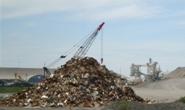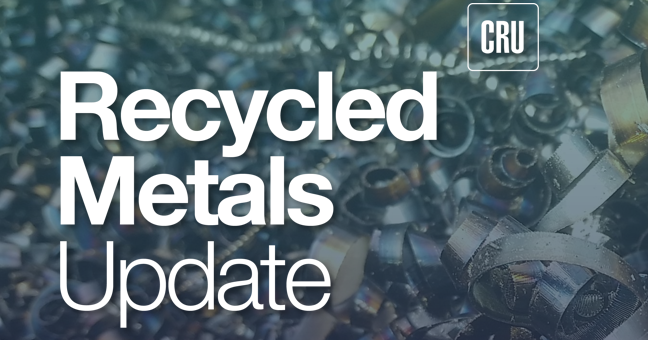Scrap Prices North America

Schnitzer Sees Domestic Scrap Shipments Outpacing Exports
Written by Sandy Williams
January 9, 2014
Schnitzer Steel Industries, a metals recycling business, reported an adjusted net loss of $5 million during the first quarter 2014, ending Nov. 30, 2013, compared to adjusted net losses of $14 million the previous quarter and $1 million a year ago. Losses reflected soft ferrous scrap prices early in the quarter and restructuring costs.
“All three business segments generated positive operating income, including higher sequential performance for both our Metals Recycling and Auto Parts Businesses, and a continuing trend of profitability in our Steel Manufacturing Business,” said Tamara Lundgren, President and Chief Executive Officer.
In their conference call, Schnitzer Steel reported scrap prices as relatively weak in September and October with strengthening to $30 per ton in the second half of the quarter.
Volume of ferrous shipments increased 2 percent year over year. Domestic shipments were up 15 percent, representing one third of ferrous volume, while exports were down 3 percent.
Tamara Adler Lundgren provided commentary on the ferrous export market:
“Basically these markets work in tandem. So, at any point in time, the domestic market versus the export market lead each other, and the domestic market has been pretty much over the last 9 months been on the leading edge of that. In terms of trading activity on the export side, Turkey was in for a large number of sales a little over 1 month ago, and they typically come in for large sales, leave the market and come back in. So it’s a normal trading pattern. Now, having said that, obviously, they’ve had some political issues over the last month or so, but their trading pattern appears to be normal.
“On the Asian side, again, China, Southeast Asia come in and out of the market. China continues to be in our top 3 purchase destinations for the last few quarters and I think will continue to do so. There — the structural comments that I think you’re referring to are the commentary about they’re using less scrap over the course of the last year or so. And I think what we’ve said before and what we believe, is that they do arbitrage. Whatever raw material is cheaper for them to use in their steel production, they use.
“But longer-term, the focus on the environmental impacts, the pollution control that is becoming more and more front and center for them, for their people and for their government, electricity cost and the fact that in the last 2 of their 5-year plans, the government has articulated policy objective of wanting to have scrap — a higher percentage of scrap used in their manufacturing. I think all of that will come together so that there — the China industry and the China government will come together and map out a way forward to increase their scrap usage. Bottom line, they’re still one of the top 5 importers of U.S. scrap in the world.”
Schnitzer says improving market conditions, cost reduction and production initiatives will drive improved performance in the second quarter.
Schnitzer Steel is a global leader in the metals recycling industry and has been in business for over a century. Three vertically integrated divisions recycle ferrous and nonferrous metal, provide used and recycled auto parts and manufacture quality finished steel products.

Sandy Williams
Read more from Sandy WilliamsLatest in Scrap Prices North America
HRC vs. prime scrap spread narrows again in January
The price spread between hot-rolled coil (HRC) and prime scrap continued to narrow in January, according to SMU’s most recent pricing data. While SMU’s average HRC price edged down week over week (w/w), it rose compared to a month ago. The January price for busheling also increased from December. Our average HRC price as of […]

HRC vs. prime scrap spread flat in November
The price spread between hot-rolled coil (HRC) and prime scrap remained the same in November as both tags were at the levels seen a month earlier, according to SMU’s most recent pricing data.

HRC vs. busheling spread narrows slightly in October
The price spread between hot-rolled coil (HRC) and prime scrap narrowed marginally in October, according to SMU’s most recent pricing data.

HRC vs. scrap spread widens but remains low
The price spread between hot-rolled (HR) coil and prime scrap widened slightly in August but remains in territory not seen since late 2022, according to SMU’s most recent pricing data.

The most underappreciated scrap grade
Over the last several years, I have noticed widening spreads between #1 Heavy Melting Steel (ISRI 201) and Shredded (ISRI 210,211), as well as Plate & Structural (ISRI 232).
